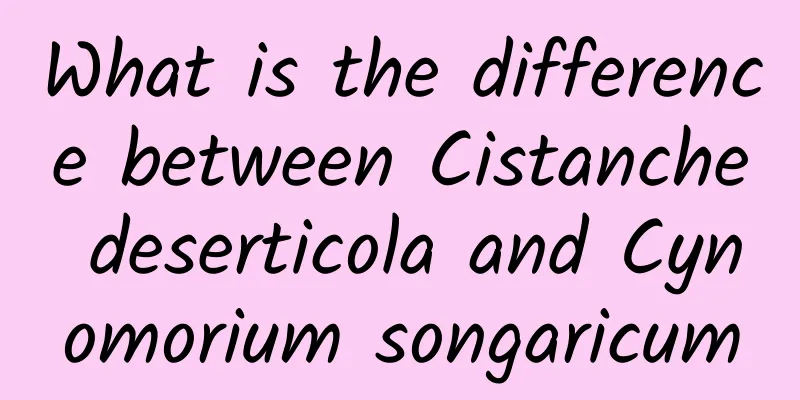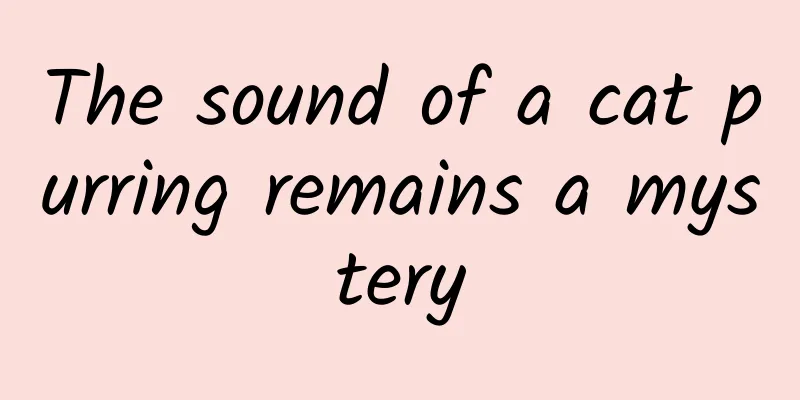What is the difference between Cistanche deserticola and Cynomorium songaricum

|
Cistanche grows in the desert. When eating Cistanche, you need to master certain methods. However, many people easily confuse Cistanche and Cynomorium songaricum, thinking that Cistanche is Cynomorium songaricum. In fact, the two are different medicinal materials. What is the difference between Cistanche and Cynomorium songaricum? Let me introduce the differences between the two to you and see what the differences are. Cistanche deserticola Cistanche deserticola: also known as Dayun, Cistanche deserticola, etc., it is a perennial succulent herb that parasitizes on the roots of Haloxylon ammodendron, a drought-tolerant herb. Its stem is yellow, 80 to 150 cm high, fleshy and unbranched, while the leaves are degenerated into small fleshy scales, sessile, densely arranged in a spiral on the stem. The part of Cistanche that is exposed above the ground is almost entirely composed of inflorescences. After flowering and fruiting, a large number of tiny seeds are produced. Cistanche deserticola is a precious medicinal material. Because of its function of "nourishing the kidney, strengthening yang, and replenishing essence and blood", it is known as the "desert ginseng" (Chinese Pharmacopoeia) and has been listed as a "tribute" by dynasties. Cistanche deserticola belongs to the Orobanchaceae family and is used as medicine for its large fleshy tubers. It is a commonly used tonic medicinal material. It is mainly produced in Alxa League, Inner Mongolia Autonomous Region, and other species are also distributed in Xinjiang. The ones produced in Inner Mongolia are of the best quality and are exported to Southeast Asia. They are known as the flagship medicinal materials of the Inner Mongolia Autonomous Region and enjoy a high reputation in the domestic and foreign markets. Cynomorium songaricum Cynomorium songaricum: also known as the elixir of life, its other names include ground hair ball, rusty iron rod, and Cynomorium songaricum. It is a perennial succulent parasitic herb. It parasitizes on the roots of Nitraria sibiricum (Bubble Thorn). It grows wild in the desert Gobi, and grows best at -20℃, where there is no snow and the ground is not frozen. 10-100cm tall, without chlorophyll, and dark purple or red in color. The underground stem is short and thick, with many tuberous absorbing roots. The stem is fleshy, cylindrical, buried in the soil at the bottom, usually with only the top exposed above the ground, slightly swollen at the base, 3-6 cm in diameter, with scale-like leaves densely distributed at the base of the stem, and imbricate absorbing roots. It is mainly produced in Alxa League of Inner Mongolia, Gansu, Qinghai, Xinjiang and other places. Cynomorium songaricum comes from "Bencao Yanyi Buyi". "Compendium of Materia Medica": "Sweet, warm, non-toxic. Greatly replenishes Yang Qi, benefits essence and blood, and facilitates bowel movements. Moisturizes dryness and nourishes tendons, and treats impotence." Ming Dynasty writer Tao Zongyi described in Volume 10 of his "Records of Stopping Farming": "Wild horses in Tatar land may mate with dragons and leak sperm into the ground. After a long time, their hair sprouts like bamboo shoots, which are thick on the top and thin on the bottom, with scales and armor, and tendons and veins connected. Its shape is very similar to that of a male penis, and it is called Cynomorium. It is the meat of Rongrong. Some say that promiscuous women in the village have sex with it, and once they get Yang Qi, they grow violently. The natives dig it up, wash and peel it, cut it thinly, and dry it to make medicine. Its power is a hundred times that of Rongrong." "Compendium of Materia Medica": "It replenishes essence and promotes Yang, moisturizes dryness and nourishes tendons, treats impotence, and lubricates the large intestine." "Zhongyaozhi": "It nourishes the kidneys, lubricates the intestines, and strengthens the waist and knees. It is mainly used to treat male impotence, female infertility, blood deficiency and constipation, and waist and knee weakness." Similarities between Cistanche deserticola and Cynomorium songaricum: Similarities between Cistanche and Cynomorium songaricum 1: Cistanche and Cynomorium songaricum are both perennial succulent herbaceous parasitic plants. Similarities between Cistanche and Cynomorium songaricum 2: Both Cistanche and Cynomorium songaricum grow in the desert, and the best value of both are found in Alxa League, Inner Mongolia. Similarities between Cistanche and Cynomorium songaricum 3: Cistanche and Cynomorium songaricum have the same effects, both of them can nourish the kidney and strengthen yang, replenish essence and blood, and moisten the intestines and promote bowel movements. They can treat male impotence, premature ejaculation and spermatorrhea caused by kidney yang deficiency and insufficient essence and blood. Female infertility due to uterine cold, sore waist and knees, weak muscles and bones, constipation due to dry intestines, etc. In addition to their medicinal effects, they are also additives in the food, tobacco, alcohol and other industries. The difference between Cistanche deserticola and Cynomorium songaricum: The difference between Cistanche and Cynomorium songaricum 1: Cistanche mainly parasitizes on the herb Haloxylon ammodendron, while Cynomorium songaricum mainly parasitizes on Nitraria tangutorum. The difference between Cistanche and Cynomorium songaricum 2: The stem of Cistanche is yellow, while that of Cynomorium songaricum is dark purple or red. The difference between Cistanche and Cynomorium songaricum 3: Cistanche is mild and nourishing, and it warms and nourishes without hurting the yin, hence the name Cistanche. Cistanche deserticola can be eaten for a long time, and its effect of moistening the intestines and nourishing blood is better than that of Cynomorium songaricum. The tonic effect of Cynomorium songaricum is stronger, and it has a greater effect in invigorating yang and improving essence, so it is suitable for short-term consumption. Its laxative effect is not as good as that of Cistanche deserticola, and its price is relatively cheap. Eating too much Cistanche will not cause internal heat, but eating too much Cynomorium songaricum will cause internal heat. Through the introduction of the above content, everyone has a deep understanding of the difference between Cistanche and Cynomorium songaricum. In fact, there are differences between the two, because Cistanche is a very nutritious medicinal material, and Cynomorium songaricum is also a very good immortal medicinal material. The similarity between the two is that they can strengthen yang and nourish the kidney, and can treat male impotence. Many differences are also described. |
<<: What is the value of Cistanche deserticola?
>>: How to distinguish the authenticity of Cistanche deserticola?
Recommend
More than 5,000 yuan is gone with just one sip of hot water. How deadly is this sip of hot water?
recently A netizen was in a hurry to go out Drink...
What are the effects of variegated parviflora
Polygonum multiflorum is the rhizome of Polygonum...
The efficacy and function of tiger teeth
In fact, the occurrence of many human diseases is...
Machine Learning: Finding the Needle in a Haystack
Fast radio bursts (FRBs) are a type of supernorma...
The cold wind is howling. Each plant has its own unique way to save its life!
In order to compete for limited sunlight and wate...
The efficacy and function of Croton glomerata
Many people are very familiar with Croton tiglium...
Nature: AI is so useful that it makes people too arrogant
In recent years, the application and impact of ar...
The efficacy and function of winter mallow
Traditional Chinese medicine often has unexpected...
The efficacy and function of the leaves of the bellows
The leaves of the Phlox sphaerocephala are a famo...
Silkworm pupae look so scary, why do people still like to eat them? Its nutritional value is beyond your imagination...
Expert: Zhang Qikai, Chinese Academy of Agricultu...
What are the effects and functions of Danggui Houpu Decoction?
It is said that women are like flowers. If you wa...
What are the benefits of eating American ginseng and red ginseng together
We all know that ginseng can better regulate our ...
“Moonquake”, is it an earthquake on the moon?
Have you heard of moonquakes ? When we look up at...
Once the mortgage is paid off, the house is yours? Are you sure?
Addendum 1: It is recommended that you save this ...









